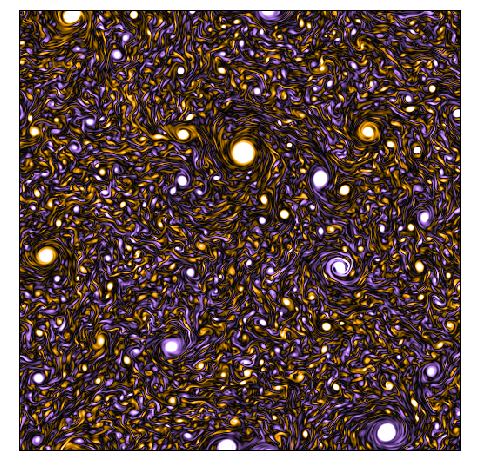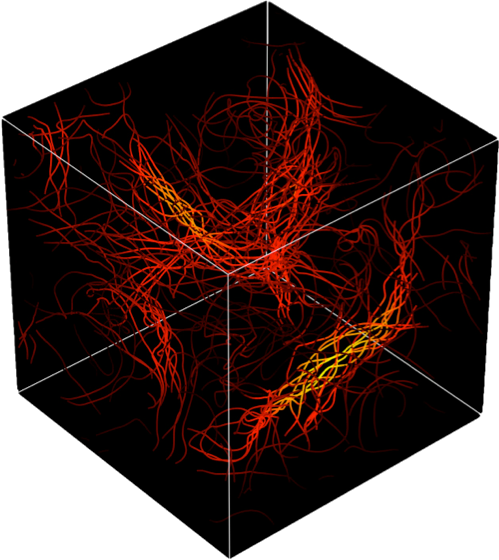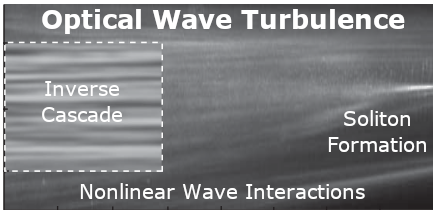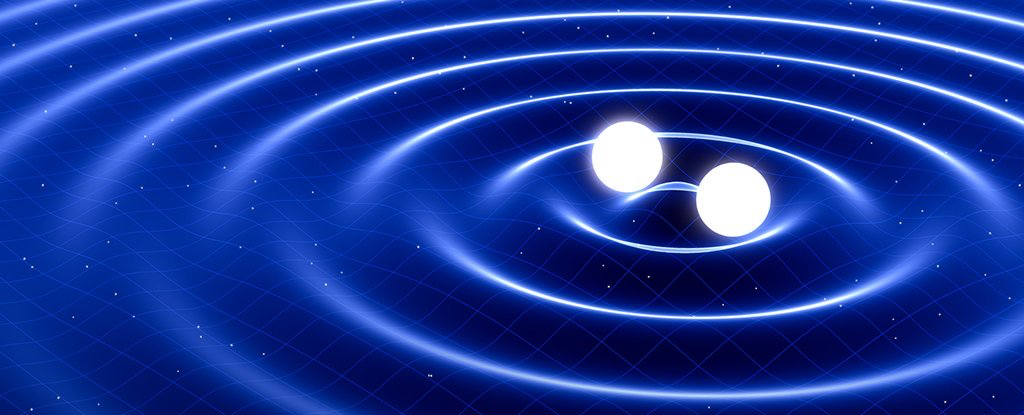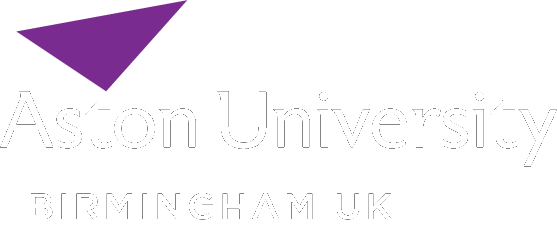Two-Dimensional and Geophysical Turbulence
Many geophysical flows are quasi two-dimensional in nature, where the flow is restricted in one dimension by either rotation, stratification, or due to physical confinement. At the most basic level they geophysical flows be modelled by two-dimensional fluid equations such as the two-dimensional Navier-Stokes or quasi-geostrophic equations. In regimes of small-scale pumping and weak dissipation, these systems display a flow of energy towards the largest scales, leading to a phenomenon called energy condensation at the scale of the system. This pile up of energy can induce the self-organization of the fluid flow into large-scale coherent structures that exist on top of a random turbulent background. For geophysical flows, these coherent structures usually take the form of system-sized vortices or zonal jets (think of hurricanes or large-scale ocean jets such as the Gulf Stream). Questions of universality of these structures are the most natural questions to ask for mathematicians. My interests relate to developing a statistical theory for modelling the complex interactions between the large-scale coherent structures and the underlying turbulent fluctuations.




